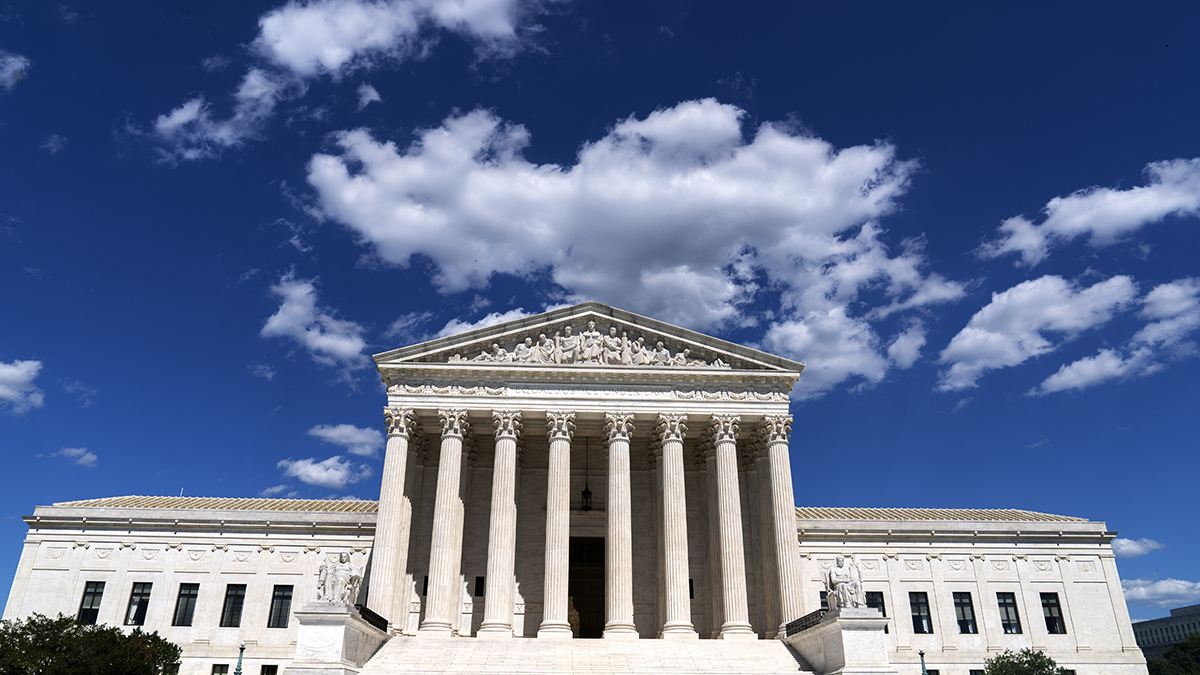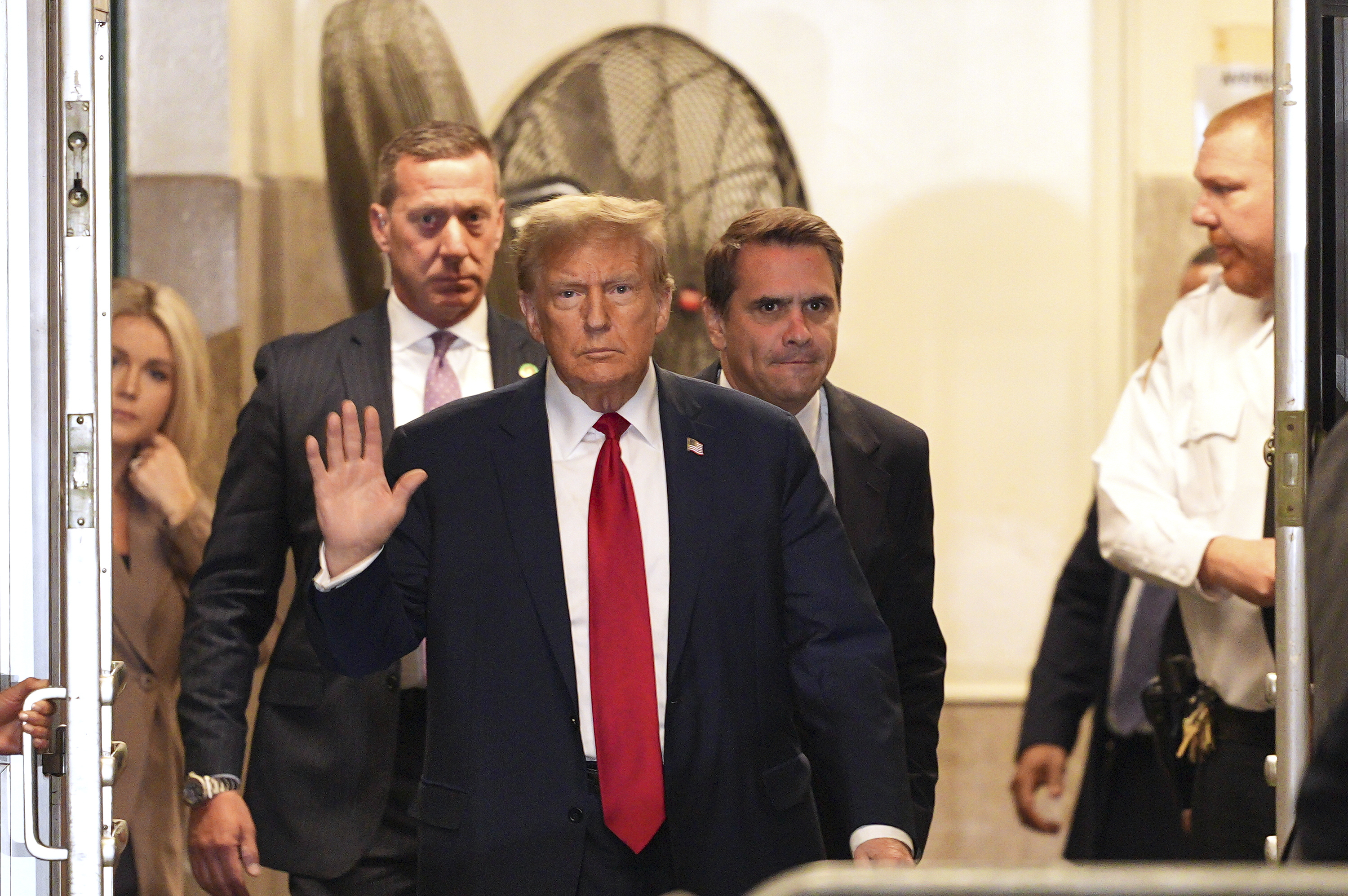The first small group of asylum-seekers to be allowed into the United States under the Biden administration’s recent changes came into the country Friday through a U.S.-Mexico border crossing in south San Diego County.
The asylum-seekers who will be allowed into the U.S. are waiting for courts to decide on their active immigration cases but were sent to Mexico under the Trump Administration's Migrant Protection Protocols (MPP). Now, instead of having to wait in Mexico while their cases are being processed, they will be allowed to wait in the U.S.
Twenty-five asylum seekers who were stuck in Mexico were granted access into the United States on Friday. The group was transported by bus to the U.S.-Mexico border and took a pedestrian crossing from Tijuana to a U.S. Customs and Border Protection (CBP) processing site.
The group consisted of six families, 5 individuals from Honduras, Peru, Nicaragua, Guatemala and Cuba.
Get Southern California news, weather forecasts and entertainment stories to your inbox. Sign up for NBC LA newsletters.
The migrants were tested for COVID-19 at a staging site in Mexico, operated by the United Nation's International Organization for Migration agency before they were allowed to enter the United States.
There, they were equipped with face masks that they were told must be worn during staging and transport across the border. Anyone who tests positive would be quarantined for 10 days before they would be allowed to cross into the U.S.
U.S. & World
News from around the country and around the globe
All of Friday's asylum seekers tested negative, the Associated Press reported.
Upon admittance to the United States, the asylum seekers were taken to San Diego hotels to quarantine before they take a plane or bus to their final destinations in the U.S., said Michael Hopkins, with Jewish Family Service of San Diego. The group said they would buy bus or plane tickets if asylum-seekers can't afford them and winter clothes if needed.
The group is part of the San Diego Rapid Response Network, a coalition of non-government organizations working to help asylum seekers secure transportation and temporary lodging after they cross the border.
The 25 asylum seekers were given notices to appear in court but immigration attorney Yunuen Mora says not much else is known about how the process will work from there.
"They're not signing up anyone else through the MPP program and now they’re going to have to create regulations as to how we're going to get everyone from the MPP program into the United States," Mora said.
Under former President Donald Trump’s “Remain in Mexico” immigration policy (MPP) signed in January 2019, there are an estimated 70,000 asylum-seekers stuck in Mexico. The program exposed people to violence in Mexican border cities and made it extremely difficult for them to find lawyers and communicate with courts about their cases.
President Joe Biden vowed to reverse the policy.
U.S. officials said 25,000 of those 70,000 asylum-seekers have active immigration cases and, after going through the proper process, will be allowed into the U.S. under these changes.
Erica Pinero from Al Otro Lado, an immigration outreach group, said there are thousands of asylum seekers who will not fall into a category that allows them to come into the U.S. at this time, including those who have previously lost their MPP cases, those who are on an asylum-seeking list, and those who wish to ask for asylum but are not already in the MPP program or on the asylum-seeking list.
She was hopeful that this was just Phase 1 of the Biden administration's immigration plan and that a process would be established for other asylum seekers in the near future.
Dulce Garcia, who was brought to the U.S. as an undocumented child and is now the Executive Director of the nonprofit citizenship group Border Angels, called the moment bittersweet because thousands will be left in Mexico.
“For the last few years, [the United States] closed the doors, we rejected people who are really vulnerable coming from horrible traumas and we essentially re-traumatized them by saying they had to wait on the Mexican side of the border.”
While Garcia acknowledges it will be a long road for significant progress, and that change has been promised before with little follow-up, she finds optimism in the language used in Biden’s orders, and even in recent meetings with Customs and Border Protection officials here in San Diego.
“We’re celebrating this very important step and at the same time, it’s a bittersweet moment,” Garcia said. “Because we have thousands of asylum seekers in Tijuana, in these shelters.”
U.S. officials said two of the crossings can each process about 300 asylum-seekers daily, although the initial groups will be about 25 a day.
The plan will expand into Brownsville, Texas, on Feb. 22 and El Paso, Texas, on Feb. 26.
“We’re glad that there’s a beginning to that policy being ended but there’s much more work to do," said Alex Mensing with the outreach group Innovation Law Lab.
Mensing and other immigration advocates were in Tijuana Friday to spread information to migrants wishing to seek asylum in the United States. He said many migrants showed up in Tijuana, Mexico hoping to be granted access to the U.S. and his group was working to inform them only those with current immigration court proceedings would be allowed in the U.S.
Dozens of people lined up at the El Chaparral port of Entry on the Tijuana side of the border crossing expressed their confusion on Friday to NBC 7 and Telemundo 20 news crews, who were on both sides of the border Friday.
“We don’t have any information,” Delis Alvarez, an immigrant from Honduras, told Telemundo 20. “I’m desperate because they keep changing my dates and I’m not getting any answers.
Alvarez told Telemundo 20 she arrived in Mexico with her daughters two years ago and, after three court dates, had still not been able to secure asylum.
Christian Hernandez said he arrived with his wife and three children in Tijuana two years ago, too. He also said the only thing he knew about Friday’s border crossings was that only those who had active court cases would be able to cross.
Pinero was handing out pamphlets of information to the group of asylum seekers at the Tijuana border crossing, which included the website and phone numbers they would need to call to find out if they qualify to come into the U.S.
U.S. officials said those with active cases as well as several hundred asylum-seekers who are appealing decisions should register on a website from the U.N. High Commissioner for Refugees.
Asylum-seekers shouldn’t show up at border crossings expecting to come into the U.S. if they’re not among those who have active immigration cases, U.S. officials said. The government sends notifications on where and how to cross to asylum-seekers who are eligible.
The busiest border crossing in San Diego County is the San Ysidro Port of Entry, which also, according to the U.S. government, is the busiest land port of entry in the Western Hemisphere. Daily, the San Ysidro Port of Entry processes approximately 70,000 northbound vehicles and 20,000 northbound pedestrians.



